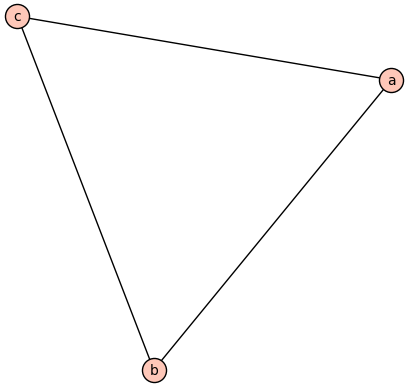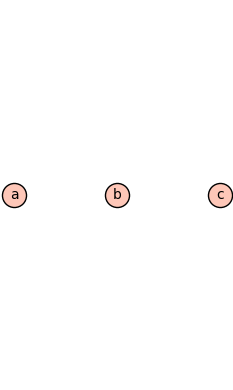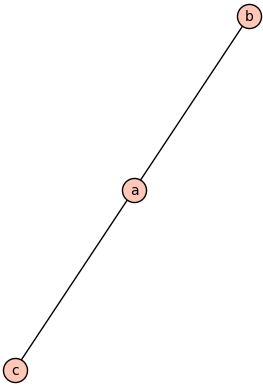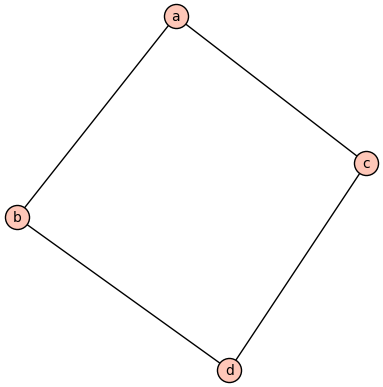Right Angled Artin Groups
16 Aug 2020
I’m starting my PhD at UC Riverside this fall, and I’ve enrolled in a program that introduces me to some faculty and gets me familiar with the campus… Or, it would were it not for covid. Regardless, I’ve been meeting with a summer advisor (Matt Durham) over zoom every week for a while now to talk about hyperbolic surfaces and mapping class groups. I’m not sure I’m ready to make a blog post about that material, but last week we talked about Right Angled Artin Groups (RAAGs), which arise as subgroups of mapping class groups in a very natural way (cf. this article by Thomas Koberda). Raags, as we’ll soon see, are controlled by their combinatorial structure, which gives us a good way of creating counterexamples by converting algebraic conditions into combinatorial ones.
Let’s start getting to the meat of things: What is a raag?
Given a (simple, undirected) graph
(where
That is,
⚠ Warning: Some people use the opposite convention, and say
Of course a definition is no good without examples, so let’s give a few concrete ones:
We’ll start with

With this graph, we’ll have a generator for each vertex
Then
Next, let’s look at the opposite extreme. Let

Finally, let’s look somewhere in between. Let

Then
As an aside, this is not unlike the automata groups that I worked with in
my undergraduate thesis. In that setting we leveraged the combinatorics of
Mealy Automata in order to
understand complicated groups of automorphisms of the infinite binary tree.
Automata groups are also rich sources of counterexamples
(cf. the grigorchuk group)
in group theory for the same reason as raags. In fact, automata groups are
so complicated that we still haven’t classified all the groups you can get
from an automaton with only
Coming back to raags, it is easy to see that
As a quick exercise, what is

Raags have lots of nice properties, which you can see outlined in
these articles (and others):
1,
2,
3.
What are these nice properties? Well, as I’ve been alluding to for a while,
the algebraic structure of
-
If
-
If
-
-
There is a (more complicated) algebraic condition which happens if and only if
- There is an extremely complicated construction which identifies a family of expander graphs.
You might try to take your own favorite graph-theoretic concepts and see how they are reflected group-theoretically. Don’t be discouraged if you can’t show that your concept is represented faithfully – many of the above proofs involve a surprisingly deep toolkit. It’s still exciting to see what the characterization should be. As a more abstract bonus-exercise, here’s some weird food for thought: By analogy to the first two points above, a free product of any two groups is a kind of generalization of the disjoint union of two graphs. Similarly, the direct product is a kind of generalization of the graph-theoretic join.
Now that we understand what a raag is, the categorically minded among you might have a question: Is this a functor? And if so, what can we say about it?
Perhaps unsurprisingly, the answer to the first question is “yes”. The answer to the second depends on what category you think our graphs are living in. I claim there is a most natural choice of category, which I’ll describe in the next post. In the meantime:
Play around with this functor. What can you say about it? We’ll compare notes in the next post ^_^
-
By a full subgraph I mean if two vertices are adjacent in